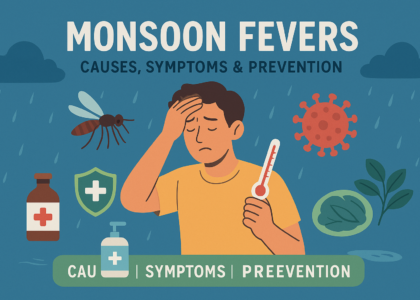Understanding SIADH and Low Sodium (Hyponatremia): Causes, Symptoms & Treatment
👩⚕️ What is Hyponatremia?
Hyponatremia is a condition where the sodium level in your blood falls below the normal range (135–145 mEq/L). Sodium plays a vital role in maintaining fluid balance, nerve function, and muscle control. When sodium levels drop too low, it can lead to serious health problems if not treated promptly.
🔍 What is SIADH?
SIADH (Syndrome of Inappropriate Antidiuretic Hormone Secretion) occurs when the body produces excess antidiuretic hormone (ADH). This leads to water retention, diluting the sodium in your blood and causing low sodium levels despite normal salt intake.
🧠 Common Causes of SIADH
Medical Conditions:
-
Brain disorders: stroke, meningitis, head trauma
-
Lung diseases: pneumonia, tuberculosis
-
Certain cancers: especially small cell lung cancer
-
Post-surgery or stress on the body
Medications that can trigger SIADH:
-
Antidepressants (SSRIs like fluoxetine)
-
Anti-epileptics (carbamazepine, valproate)
-
Antipsychotics
-
Chemotherapy drugs
-
Painkillers and NSAIDs
⚠️ Symptoms of Low Sodium (Hyponatremia)
Mild to Moderate:
-
Headache
-
Nausea
-
Muscle cramps
-
Fatigue
-
Memory problems
Severe:
-
Confusion
-
Seizures
-
Loss of consciousness
-
Coma (in extreme cases)
🚨 Severe hyponatremia is a medical emergency and needs urgent treatment.
🧪 How is it Diagnosed?
At Dr. Sonal’s Health Care Centre, Himayat Nagar, diagnosis involves:
-
Blood tests: to measure sodium and osmolality
-
Urine tests: to assess urine sodium and concentration
-
A review of your medical history, symptoms, and medications
💊 Treatment of SIADH and Hyponatremia
Dr. Sonal Jain, MD in Internal Medicine, offers expert care based on the root cause and severity:
-
Stopping the offending drug if it’s medication-induced
-
Fluid restriction – usually the first step
-
Salt tablets or IV saline for more severe cases
-
Tolvaptan – a specialized oral medication to correct sodium
-
Treating the underlying condition (like infection, tumor, etc.)
📌 Important Reminders
-
Never start salt tablets or fluid restriction without medical supervision
-
Sudden correction of sodium levels can cause serious brain injury
-
Regular follow-up and lab monitoring are key
🏥 Expert Care in Hyderabad
If you’re experiencing low sodium symptoms, or have been diagnosed with SIADH, get expert help from:
Dr. Sonal Jain, MD (Internal Medicine)
🩺 Dr. Sonal’s Health Care Centre
📍 Himayat Nagar, Hyderabad
📞 Call: 9701073615
📆 Clinic Timings: Mon–Sat: 9 AM – 2 PM, 5 PM – 9:30 PM; Sunday: 9 AM – 2 PM
📸 Follow us on Instagram: @drsonal_healthcare







